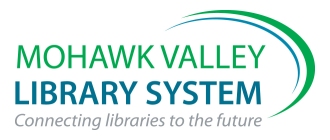 |
START WITH SCIENCE KITS
Science Programs for Children Ages 4 and 5 |
Objectives
- To learn about three different modes of transportation: water, land and air.
- To experiment with different means of power for the different modes: pushing, wind, and rubber bands.
|
Books : (In kit)
- Ferryboat by Betsy Maestro
- I Fly by Anne Rockwell
- Truck by Donald Crews (Big Book)
|
Equipment : (In kit)
- 7 Wooden cars
- 3 Wooden sailboats
- 1 Cloth Sail
- 4 Wooden paddleboats (with extra propeller)
- 4 Tubs
- 4 Plastic boats (tops of yellow, green, red)
- 8 Balsafoam airplanes
- 10 Rubber bands
- 32 Wheels
- 1 Bag of medium foam airplanes (need slight assembly)
- 1 Bag of small triangle airplanes
- 1 Bag of large blue & yellow foam airplanes (need slight assembly)
- 4 Yellow and blue styrofoam rockets
- 4 Black and orange styrofoam rockets (small)
- 1 Wing glider (fluorescent orange)
|
Consumables : (To be supplied by you)
- Paper for paper airplanes
- Water for water tank
|
Resource Books : (Contact your local library to borrow)
- Ardley, Neil. Science Book of Motion. Gulliver Books, 1992
- Evans, David. Make It Go. Dorling Kindersley, 1992.
- Irving, Jan. Full Speed Ahead: Stories and Activities for Children on Transportation. Teacher Ideas Press, 1988.
|
Bookmarks : (In kit)
- Paper copies of the bookmark are included in the kit. PDF and JPEG copies are available here.
- PDF – 4 bookmarks per page. Ready to print in color.
- JPG – single high quality jpeg image.
|
Program
- Objectives
- To learn about three different modes of transportation: water, land and air.
- To experiment with different means of power for the different modes: pushing, wind, and rubber bands.
- Introduction
- Talk about how we can get from one place to another in a sensible fashion. Start with small, such as across the room – crawl, walk, run. What if we wanted to go faster? Add wheels for roller skates. What if we had a large load to carry? Carry in arms or push in a wagon. Now go through the same steps for a longer distance. You still could walk, skate, bike, or bus/car/train (motorized wheels). Now go for a longer distance and add the element of speed, which should bring airplanes into the discussion. Also add water to cross which should bring in boats, which again could be paddled, sailed or motorized. Try to get the children to do as much brainstorming on this discussion as possible.
- Ask about combining modes of transportation. Can cars ever be in the air or on water? Yes, with cargo jets or ferryboats and barges. Can planes ever be on the water or land? Yes, when planes are taxiing or with pontoons. Can boats be in the air or on the land? Only when boats are in planes or are pulled on trailers.
- Talk about size of each kind of vehicle which is a major factor in choosing the means of transportation.
- Program
- Read story – FERRYBOAT by Betsy Maestro.
- Show a wooden car minus the wheels and how it is difficult to move across the table. Add wheels and see how much faster it moves.
- Show different airplanes – paper, and blue/yellow foam ones which are powered by pushing.
- Show flying the wooden airplanes powered by the rubber bands.
- Show boat pushed in water.
- Show sailboat being pushed by wind power (have someone blow on it).
- Show paddle boat with rubber band power chugging through the water.
- Let the children explore all the vehicles, trying the different types and powering methods. Remind children not to throw airplanes at classmates, but they can fly them to a partner (classmate who is expecting to receive the plane).
- General
- A large room with few tall objects is nice for flying the airplanes.
- The water tank needs just a bucket of water since it really needs to be about 6” deep to allow the paddle boat enough clearance.
- The joys of throwing airplanes and playing in boat water far exceeds the interest in cars, so be aware for dividing children and rotating them around to different areas.
- The paper airplanes were just as popular with the children as the other airplanes. Instructions are included for airplanes with different abilities. It is nice to hand out instructions to participants for further “research” at home. If time allows, make enough paper airplanes ahead of time to give one to each child to take home.
- This is not a quiet program!
- An additional “BIG” book for children to enjoy with this program is Donald Crew’s TRUCK.
- Or, read I FLY by Anne Rockwell, a fictional look at a young boy’s plane trip. It includes scientific information about the speed of the plane, cruising altitude, etc.
|
Evaluation
Please print this evaluation, complete it and return to MVLS in the SWS red envelope.
Topics | About the Kits | Lending Policy

